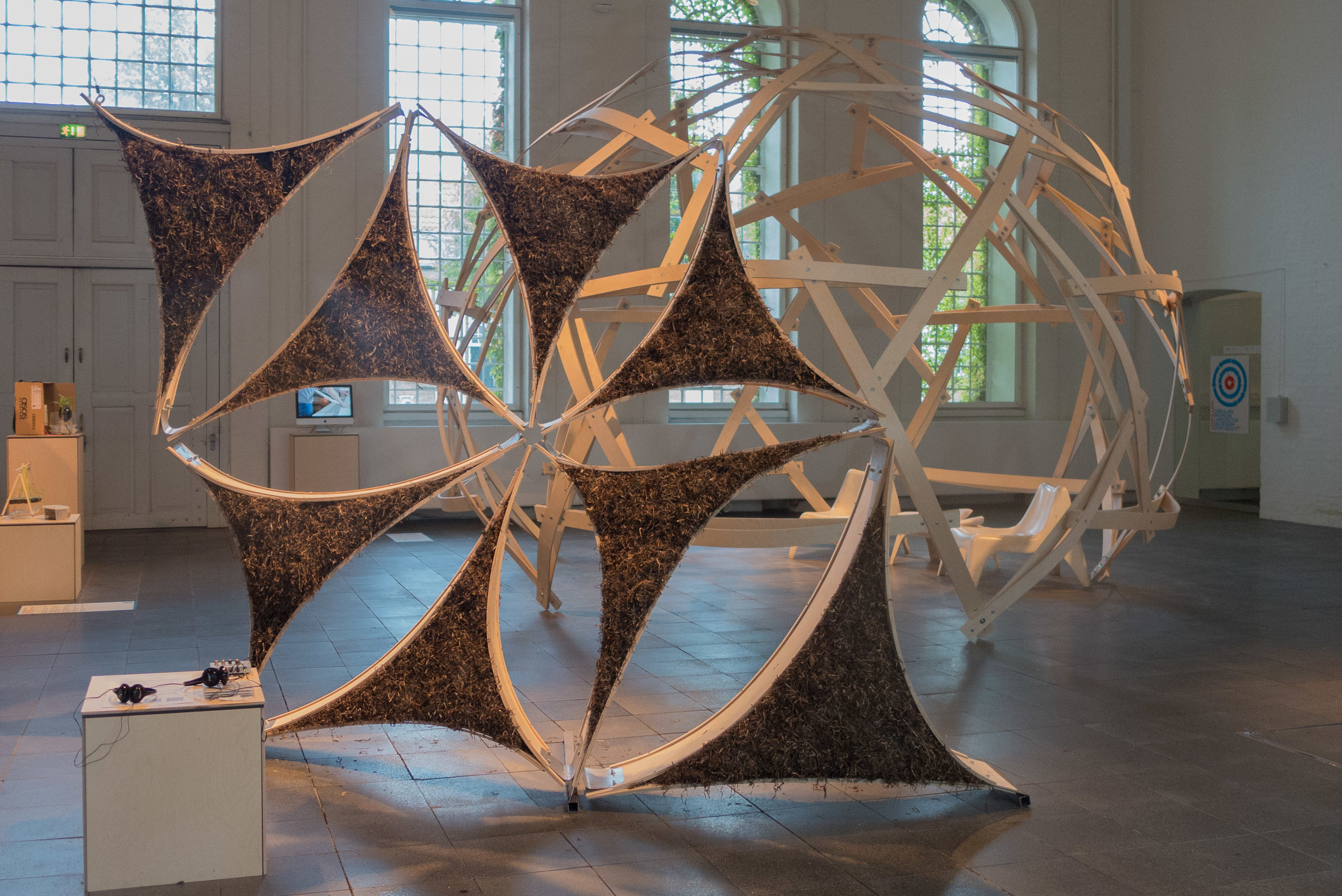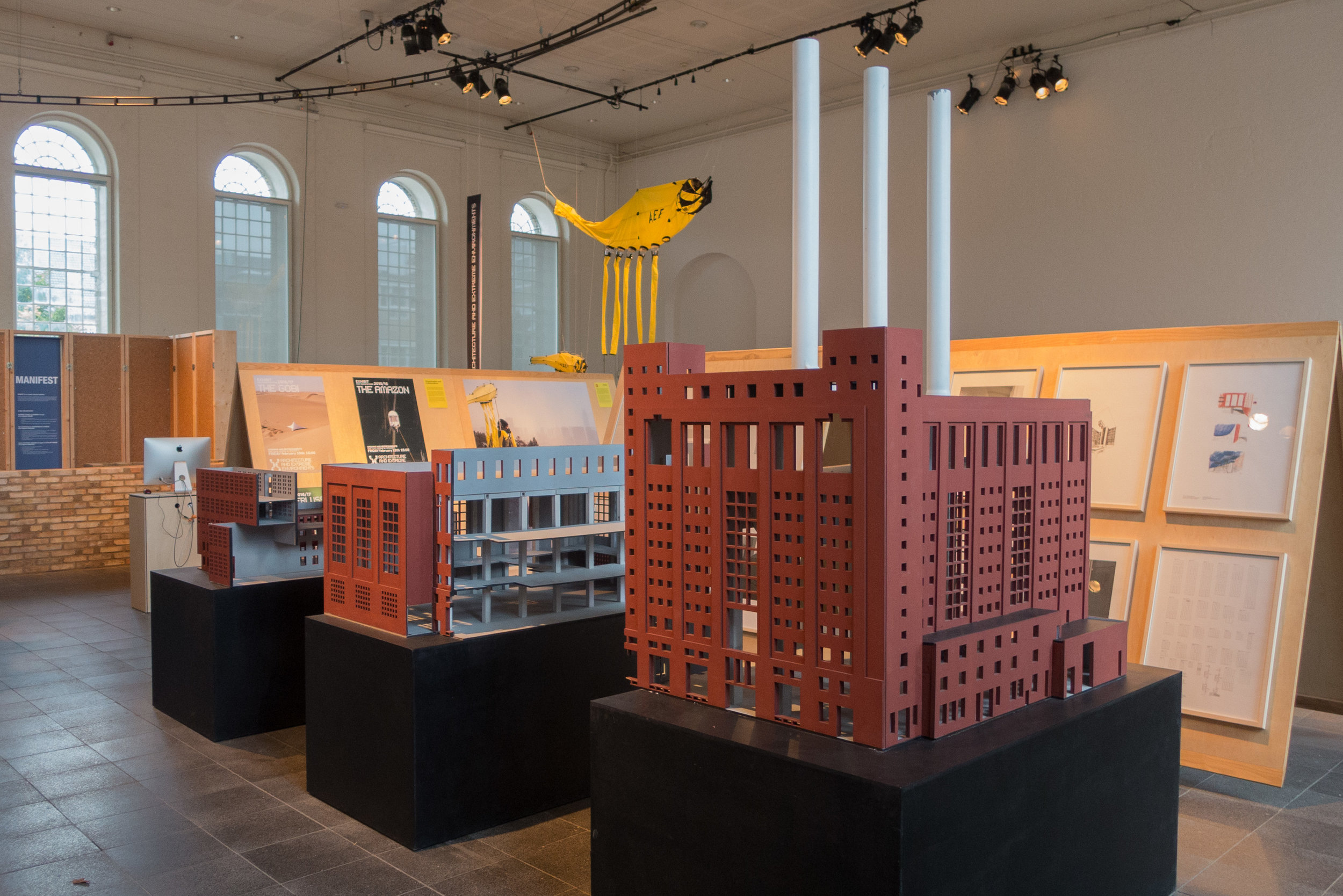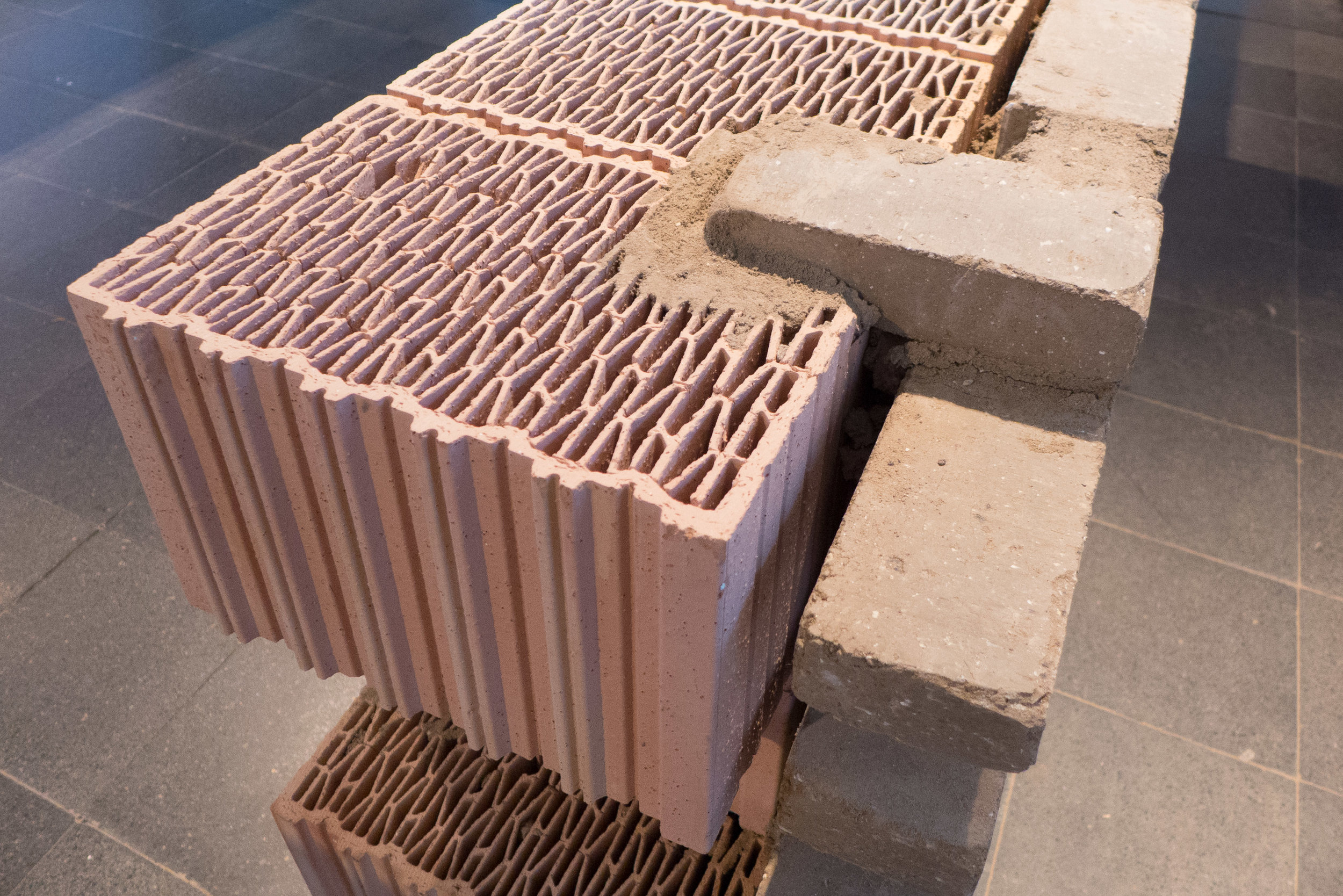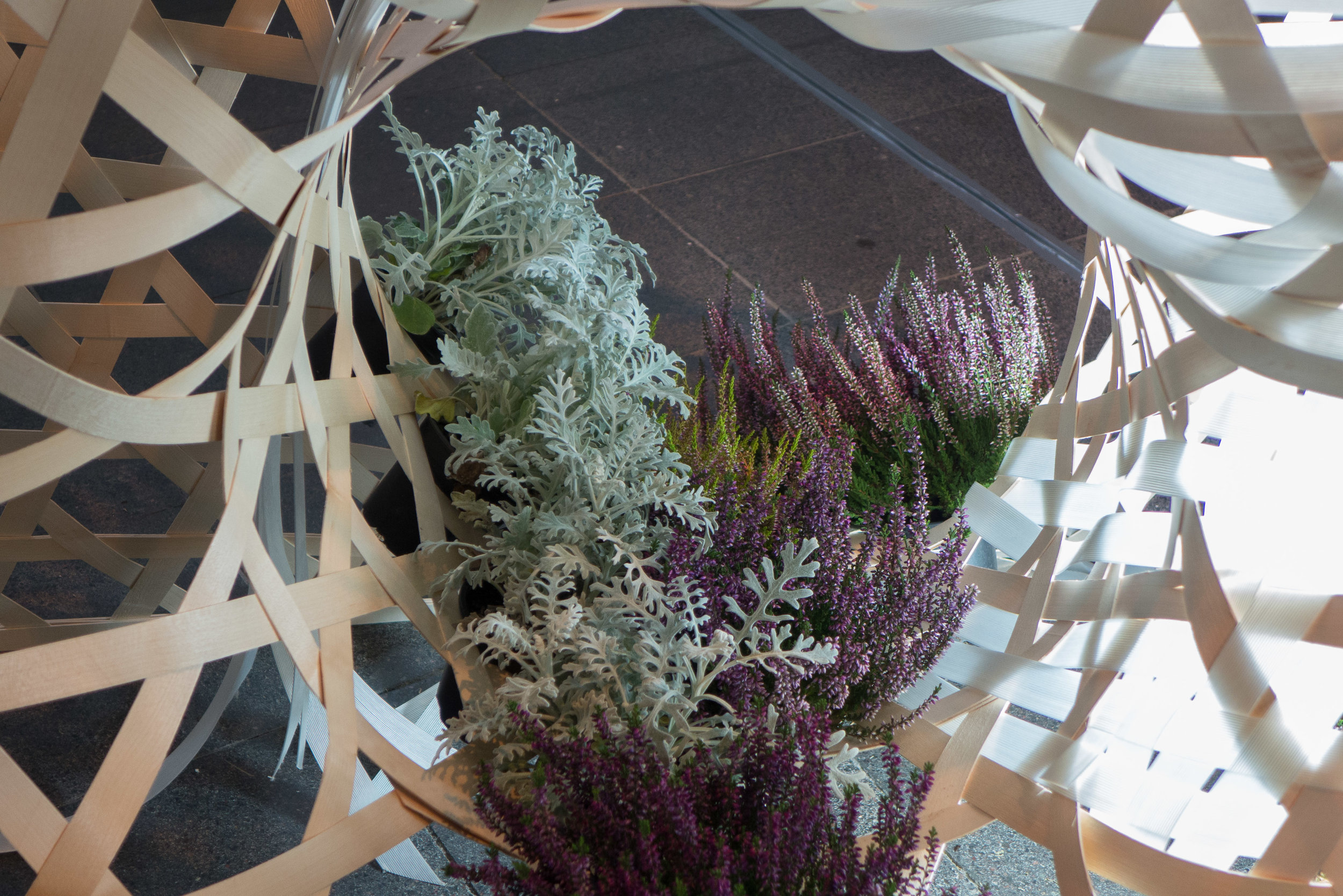news, notes, photographs and thoughts about design, architecture, planning and townscape and exhibitions in Copenhagen
Tordenskiold
/one of the tall ships in the battle - to the right is the silhouette of the Great Brewhouse built by Christian IV in the early 17th century to supply the ships being loaded with sails, ropes, gunpowder and armaments from the Arsenal buildings immediately to the north
a reconstruction of the harbour in the 17th century on a staircase in the City Hall. The large ship with three masts shown here is approximately in the area where the Black Diamond - the National Library - has been built and the column marks the point where ships turned to go through the narrow gap to enter the inner harbour - now the courtyard garden between the library and the parliament buildings with the Arsenal - now the Tøjhusmuseet - to the left, the castle, now the Parliament buildings, in the centre and beyond the merchant quays and moorings along what is now Gammel Strand
As I walked back over Knippelsbro this evening there were several very loud booms, a mass of smoke, the sound of drums beating the attack and I realised that there was a naval battle in the harbour beyond the bridge with the tall masts of sailing ships emerging from the gloom and all immediately in front of the Black Diamond … the Danish National Library.
And no - I wasn’t heading back from a bar and no this sort of thing certainly doesn’t happen on a Saturday evening on Euston Road immediately in front of the British Library … which is a pity.
This was a re-enactment of a battle in 1717 commanded by the famous Danish naval hero Peter Tordenskiold … a nobleman from Trondheim and actually christened Peter Jansen Wessel but his exploits earned him the nickname Tordenskiold or Thunder Shield which somehow seems more appropriate.
After a dash back to the apartment to get a camera I took a few photographs. I always have a camera with me, or nearly always, but for once, on a gloomy evening - nipping out to buy tea bags - I hadn’t expected to come across a naval battle.
Since the time of Tordenskiold the harbour has been narrowed as quays have been built out from the Christiansborg side and from the Christianshavn side and the massive building of the 17th-century Royal Arsenal is now a museum. The tightly enclosed area, the square basin, alongside the Arsenal and below the castle - where the battle ships of the navy of Christian IV pulled in to load with gunpowder and beer - is now filled in and is now the gardens between the parliament buildings and the National Library and the area where the first major shipyards were, where the fighting ships were built - close to the naval church of Holmen - is the site of the National Bank designed by Arne Jacobsen.
If you think that a naval battle has little to do with design then you would be wrong. The architecture of Christian IV - including the Arsenal and the great brewhouse from the early 17th century - were some of the first major industrial buildings on a truly modern scale and the great fighting ships and the merchant fleet of Denmark through the 17th and 18th century were some of the best and some of the most powerful in the western world, depending on up to date design, advances in technology and the most amazing skill from carpenters, metal workers, sail makers, rope makers and so on. There are records of Christian IV taking his latest war ship to England to show his brother-in-law King James and his nephew Prince Frederick just what Danish ship builders could do and show them how much faster and how much better the up-to-date technology of Denmark was than anything being built in London. Not exactly a trade delegation to promote Danish design but along the same lines.
And Tordenskiold? He died in 1720 just a few weeks after his 30th birthday, in a duel where the evidence suggests he was betrayed and set up to loose.
taken from the web site of BLOX from their post about the event
Kultur Natten ... reporting back
/
Actually it’s difficult to report back on Kultur Natten - or at least on the night overall because, even with careful planning, and even trying to pick a sensible route, it is impossible to see everything you want. This year there were around 250 different venues around the city and in many of the main buildings and the galleries and museums and theatres there were full programmes of different events all through the evening.
And then part of the real pleasure of these events is that you get caught up in watching a demonstration you hadn’t even planned to see or you ask a question and you find yourself pulled in by someones enthusiasm and expertise. So this is a bit of an impression … my impression … of some of the places I managed to get to see … and some of the queues I saw in passing.
For many people in the city Kultur Natten is their chance to see inside some of most important buildings in in the city that they walk past most days, but where normally access for the general public is restricted …. simply because from Monday to Friday these are busy working places … but from 6pm until midnight on Kultur Natten, not only is there open house but in most of the buildings people are there to explain what they do and why and in some you get to explore what goes on beyond the public areas.
So this year I took this opportunity to look around the Eastern Courthouse - built in the 18th century as an opera house in what was then the new town around the Amalienborg Palace - and then went to the City Court House - in what was, through the 19th century, the city hall until the present City Hall was completed in the early 20th century - and then on to the present and famous city hall itself where I joined thousands of people exploring the council chamber, function rooms, amazing staircases and the archives.
Of course there were long queues of people keen to get a first look at sections of the new metro before it opens and as always the government buildings of Christiansborg and the State Apartments and the kitchens and royal stables on the island were incredibly popular.
This was the first time since it was almost-completely rebuilt that I have been into the DI building - the headquarters of Danish Industry close to the City Hall - apart that is from seeing exhibitions in the entrance.
A new exhibition of photographs City Struck opened at the Danish Architecture Centre and this will be the last major exhibition here in the present building before they move to BLOX - a new building close to the National Library.
There were light shows on many of the buildings and food stalls and beer tents and coffee places everywhere ... the smell of roasting marshmallows in the courtyard of the Design Museum was amazing. And there were jazz bands and performances and I heard several times in the distance military bands and I know there were choirs singing in several of the churches and in the Thorvaldsen Museum.
And everywhere there were special displays and demonstrations so, at the Design Museum, people watched to see how a craftsman from Carl Hansen makes the seat of a wishbone chair in paper cord. At Realdania there were demonstrations of carpentry and people could try their hand at brick laying or blacksmithing and Heidi Zilmer was there to talk about the amazing wallpaper she recreated for the house of Poul Henningsen in Gentofte that was recently restored by Realdania and, of course, there were staff there to talk about the important historic buildings Realdania own, preserve and, where possible, open to the public.
It’s important to describe the good humoured sort of carnival-like atmosphere around the city as people line up to get into the places they really want to see - the line of people outside the gallery at G L Strand was amazing - and although most events are open until late - many until midnight - it really is an evening for children and families ….. I’m sure there are regulars who get there as the doors open to get to the huge collection of Lego brought out at the Danish Architecture Centre ….. and kids get a chance to watch special events in the theatres or the Opera House and they can explore the stage or see the scenery up close.
This is all driven, in part, by the idea that Copenhagen belongs to its citizens and, when possible, they should have access to its buildings and organisation, but really it’s about pride and enthusiasm … the enthusiasm of the people who work for the city and its galleries and its administration and its companies and the enthusiasm of the citizens for what goes on in their city.
Kulturtårnet on the bridge - Knippelsbro
Light show in the courtyard of the Design Museum on the gable of the pavilion of the old pharmacy
The new exhibition at the Danish Architecture Centre and children looking at a display outside the entrance
Heidi Zilmer at Realdania talking about the wallpaper that she recreated for the house of Poul Henningsen in Gntofte
Loius Poulsen where there was open house in the show rooms on Gammel Starnd
The Department of Industry
The inner atrium of the City Hall with people looking at the building and meeting staff and looking at stalls about the work of the council and the city
M/S Bibiana
/A coaster that has been refitted as an exhibition and teaching space with workshops for children centred around fairy stories and tales of the sea.
Funded by Nordea Fonden, the ship has had a full programme through the summer visiting ports and coastal towns around Denmark.
M/S Bibiana will be moored at the quay at Kroyers Plads until 14 October
Ørestad street art
/
These hoardings are not around engineering works for the new metro but around the construction site for a new apartment building on C F Møllers Allé just south of the Bella Center in Ørestad. The art work is by pupils at the nearby gymnasium.
I like the cryptic statement that WE BLAME SOCIETY BUT WE ARE SOCIETY and then there is ....
The tigers of wrath
are wiser than
The horses or instruction
But never forget
The Pandas of rest
Rather like a proverb or a good fortune cookie where you can’t work out the meaning but it sticks in the memory. And wrath spelt correctly in English by a kid from a Danish school is really impressive by why horses or instruction which implies a choice? I can have horses or instruction but not both? Or are there modern references here that I'm too old to understand?
Circular Economy
/A major exhibition at the Royal Danish Academy of Fine Arts Schools of Architecture, Design and Conservation to show fourteen projects that offer new solutions and strategies for the development of new sustainable materials along with the development of new technologies, the exploration of new approaches to building and construction and the recycling or re-circulation of materials.
“The conversion means that we need to work innovatively and experimentally on the development of new materials and the recycling of old ones, while also using our knowledge to create solutions that people actually want to use. That is the way we work at KADK, so our research and the skills of our graduates can play a major role in terms of giving people a better life without putting pressure on our planet.”
Lene Dammand Lund.
Through the Autumn there will be a series of open seminars to “draw on knowledge and experience from some of the world’s leading architects and designers in the field of circularity, who will be invited to talk about their work.”
the exhibition Circular Economy continues at KADK at Philip de Langes Allé 10 in Copenhagen until 3 December 2017
KADK Afgang Sommer’17
/This weekend is the last opportunity to see the exhibition of the projects and work of this year's graduates from the Royal Danish Academy of Fine Arts Schools of Architecture, Design and Conservation … a densely packed show of the talents and the phenomenal imaginations and skills of the students who have just completed their courses in Copenhagen.
There are profiles of the students and photographs and descriptions of their work on the KADK site.
The exhibition ends on 13th August.
KADK, Danneskiold-Samsøe Alle, Copenhagen
KADK Afgang Sommer’17
/
There is an exhibition of the projects and work of the students who have graduated this summer from the Royal Danish Academy of Fine Arts Schools of Architecture, Design and Conservation (KADK) in Copenhagen.
There are profiles of the students with some photographs and short descriptions of their work on the KADK site.
The exhibition ends on 13th August.
KADK, Danneskiold-Samsøe Alle, Copenhagen




















































